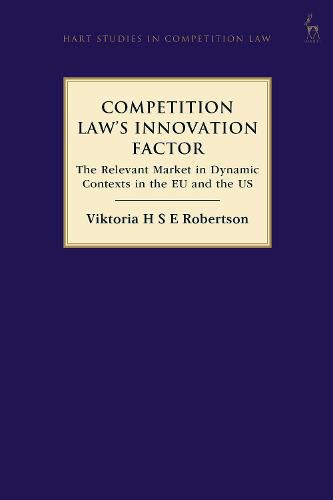Readings Newsletter
Become a Readings Member to make your shopping experience even easier.
Sign in or sign up for free!
You’re not far away from qualifying for FREE standard shipping within Australia
You’ve qualified for FREE standard shipping within Australia
The cart is loading…






In recent years, market definition has come under attack as an analytical tool of competition law. Scholars have increasingly questioned its usefulness and feasibility. That criticism comes into sharper relief in dynamic, innovation-driven markets, which do not correspond to the static markets on which the concept of the relevant market was modelled. This book explores that controversy from a comparative legal perspective, taking into account both EU competition and US antitrust law. It examines the manifold ways in which courts and competition authorities in the EU and US have factored innovation-related considerations into market delineation, covering: innovative product markets, product differentiation, future markets, issues going beyond market definition proper - such as innovation competition, innovation markets and potential competition -, intellectual property rights, innovative aftermarkets and multi-sided platforms. This book finds that going forward, the role of market definition in dynamic contexts needs to focus on its function of market characterisation rather than on the assessment of market power.
$9.00 standard shipping within Australia
FREE standard shipping within Australia for orders over $100.00
Express & International shipping calculated at checkout
In recent years, market definition has come under attack as an analytical tool of competition law. Scholars have increasingly questioned its usefulness and feasibility. That criticism comes into sharper relief in dynamic, innovation-driven markets, which do not correspond to the static markets on which the concept of the relevant market was modelled. This book explores that controversy from a comparative legal perspective, taking into account both EU competition and US antitrust law. It examines the manifold ways in which courts and competition authorities in the EU and US have factored innovation-related considerations into market delineation, covering: innovative product markets, product differentiation, future markets, issues going beyond market definition proper - such as innovation competition, innovation markets and potential competition -, intellectual property rights, innovative aftermarkets and multi-sided platforms. This book finds that going forward, the role of market definition in dynamic contexts needs to focus on its function of market characterisation rather than on the assessment of market power.